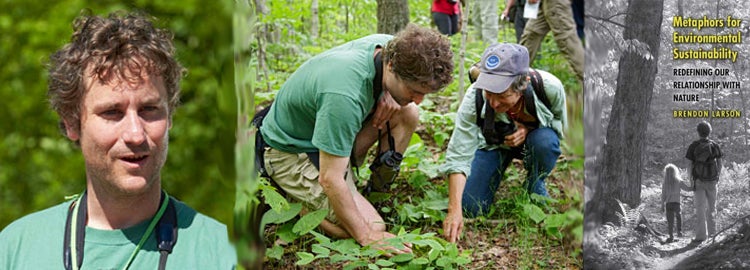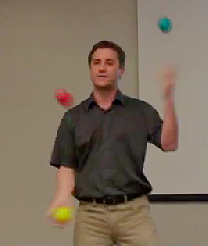Brendon Larson: Embodying Knowledge
 |
|
Dr. Brendon Larson |
Written by Hina Ahmed, Special Projects (Teaching Stories), CTE.
For children who grew up watching the adventures of Miss Frizzle from The Magic School Bus, we could only dream of finding a field-trip loving, dedicated, and innovative teacher like her.
Unfortunately, such a magic school bus does not exist. The silver lining, however, is that experiential learning conjures its own magic. It fosters students who are able to engage with and think critically about the world around them. A professor who truly nurtures these types of thinkers is Dr. Brendon Larson.
Larson has been teaching in the Department of Environment and Resource Studies at the University of Waterloo for over eight years. He’s an approachable instructor with an inquisitive nature who provide his students with experiential learning activities to build interdisciplinary connections.

What if I told you that you could take a course where you not only learned about sustainability, and how language (such as metaphors) and culture affects the discourse around it, but also learned how to juggle? In ERS 475 (Walking the Path of Sustainability: An Exploration of Embodied Metaphors), Larson uses juggling as a novel and light-hearted approach to encourage engagement with the course content — physically, mentally and emotionally. As his course outline explains, “students learn to juggle as an embodied way to explore metaphors for walking the path of sustainability”.
Larson points out that “in academia we often separate mind and body, but it is crucial to engage both in order to facilitate deep learning”. Accordingly, he adopts juggling as a teaching technique that is rooted in a multitude of studies that have affirmed its benefits. This includes its ability to boost the connections between different parts of your brain and physically alter your grey matter — in as little as six weeks!
Larson has also created another innovative course, ERS 283 (Ontario Natural History: Species and Patterns). In this blended course, students first learn about natural history patterns — that is, the diversity of life and patterns in its occurrence — through textbook readings, online assignments, and quizzes. They then have the enlightening opportunity to experience them first-hand by studying Ontario’s rich natural history for eight days at Grebe Lodge at the northern tip of the Bruce Peninsula. Larson’s students thus discover that the world around them can become a classroom of ideas and observations. For example, they gain an ability to recognize the bird songs on campus. Clearly, the right instructor can ensure that acquiring knowledge is not limited to the confines of a classroom.
Dave, one of Larson's students who completed ERS 475, wholeheartedly agrees that the critical self-consciousness the course fostered has been useful on numerous occasions since. He states that “Larson encourages students to embody the concepts, which underscores the relevance and resonance of the course material beyond the classroom.”
As can be seen in both his courses, Larson believes in fostering learning communities, rather than a hierarchical approach where the instructor is the exclusive source of knowledge. He believes in encouraging his students to engage critically with their course content, and to learn how to apply it to the real world. By taking a holistic approach to teaching, students have an opportunity to engage physically, emotionally and mentally while taking on challenging ways of acquiring skills and knowledge.
To see Dr. Larson juggle prior to giving a presentation entitled "Redefining Our Relationship with Nature" at Texas A&M University, click here!
Read more Teaching Stories
More Resources
CTE has developed more than 100 Teaching Tips. Each one is a succinct document that conveys useful ideas and practical methods for effective teaching. Some of the Teaching Tips that are relevant to the strategies mentioned in this Teaching Story include the following: